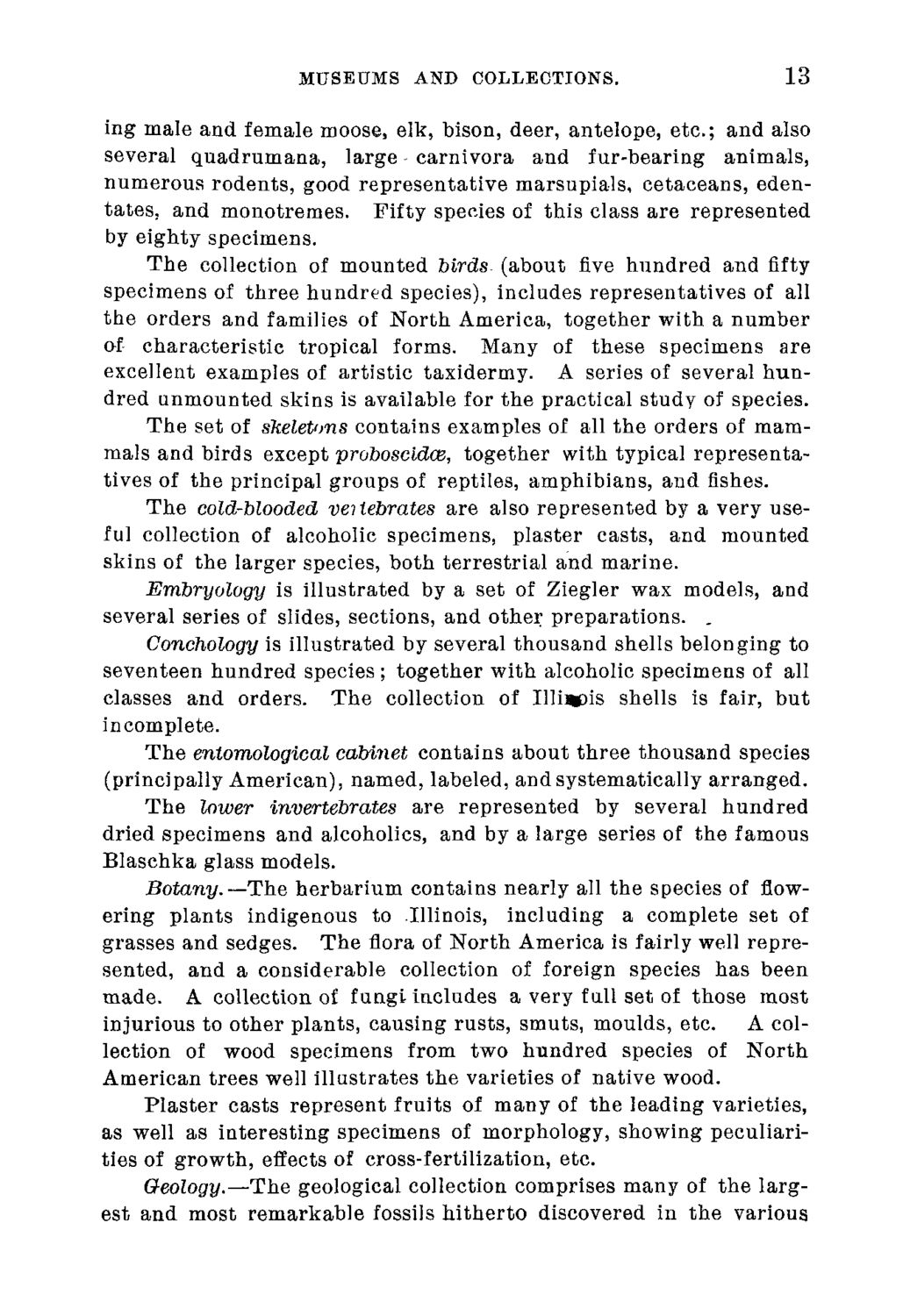| |
| |
Caption: Course Catalog - 1891-1892
This is a reduced-resolution page image for fast online browsing.

EXTRACTED TEXT FROM PAGE:
MUSEUMS AND COLLECTIONS. 13 ing male and female moose, elk, bison, deer, antelope, etc.; and also several quadrumana, large carnivora and fur-bearing animals, numerous rodents, good representative marsupials, cetaceans, edentates, and monotremes. Fifty species of this class are represented by eighty specimens. The collection of mounted birds (about five hundred and fifty specimens of three hundred species), includes representatives of all the orders and families of North America, together with a number of characteristic tropical forms. Many of these specimens are excellent examples of artistic taxidermy. A series of several hundred unmounted skins is available for the practical study of species. The set of skeletons contains examples of all the orders of mammals and birds except proboscldce, together with typical representatives of the principal groups of reptiles, amphibians, and fishes. The cold-blooded veiiebrates are also represented by a very useful collection of alcoholic specimens, plaster casts, and mounted skins of the larger species, both terrestrial and marine. Embryology is illustrated by a set of Ziegler wax models, and several series of slides, sections, and other preparations. . Conchology is illustrated by several thousand shells belonging to seventeen hundred species ; together with alcoholic specimens of all classes and orders. The collection of Illinois shells is fair, but incomplete. The entomological cabinet contains about three thousand species (principally American), named, labeled, and systematically arranged. The lower invertebrates are represented by several hundred dried specimens and alcoholics, and by a large series of the famous Blaschka glass models. Botany. —The herbarium contains nearly all the species of flowering plants indigenous to Illinois, including a complete set of grasses and sedges. The flora of North America is fairly well represented, and a considerable collection of foreign species has been made. A collection of fungi includes a very full set of those most injurious to other plants, causing rusts, smuts, moulds, etc. A collection of wood specimens from two hundred species of North American trees well illustrates the varieties of native wood. Plaster casts represent fruits of many of the leading varieties, as well as interesting specimens of morphology, showing peculiarities of growth, effects of cross-fertilization, etc. Geology.—The geological collection comprises many of the largest and most remarkable fossils hitherto discovered in the various
| |